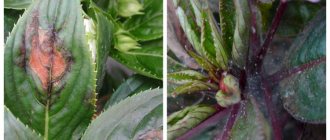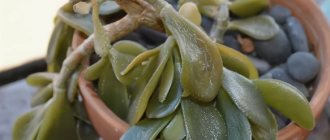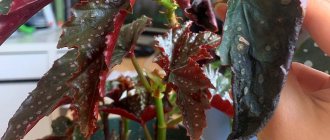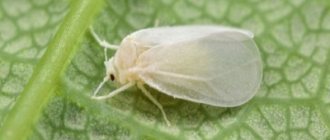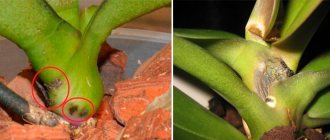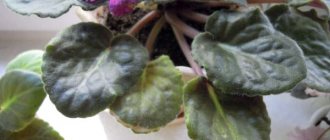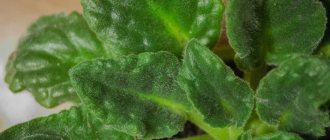Home/Flowers and Plants/Gerbera diseases with photos and their treatment, pests, prevention and control
Gerbera is a perennial flower that comes in a wide variety of colors.
Legend has it that one very beautiful nymph, Gerba, got tired of the increased attention and turned into a shy flower.
Gerbera was first discovered in the eighteenth century by the Dutch on the coast of southern Africa. They named him after the herbalist Traugott Gerber.
There are simple and double gerberas. The first look like a chamomile, the second like an aster.
Flowers love warmth and cannot overwinter in open space. It can be grown on the plot as an annual crop or grown in a pot, and taken outside in the warm season.
Garden gerberas need fertile soil, bright space, but without direct sunlight, and moderate watering.
Decorative gerberas are the offspring of Jameson's gerbera and Green-leaved gerbera.
Growing and caring for indoor gerberas
Pots with gerberas should be placed on east and west windows; on the south side they should be shaded at noon. Starting in autumn, gerberas need additional lighting.
In the warm season, the temperature should be 22-24 degrees. During flowering, approximately the same temperature should be maintained without changes.
When the plant stops blooming, gradually reduce the temperature to 12 degrees.
How to revive a dying gerbera?
Have you received an almost bare plant in poor condition? Stop getting upset! Gerbera is an amazingly resilient plant that can be reborn from almost nothing!
First of all, it must be transplanted into the right soil - very light and loose, with good water and air permeability, and acidic. Line the bottom of the pot with a layer of pebbles for drainage. Before planting, you need to carefully inspect the root system and remove all dried and rotten roots. Powder the rest with wood ash - this measure will destroy pathogenic fungi and mold. After slightly drying the roots, the plant is planted in a pot with substrate. The container should not be large and wide; the roots do not need space.
The planted plant is shed with soft, cool water with the addition of stimulants such as Epin.
Further care consists of the correct watering regime, the application of mineral fertilizers with iron and regular spraying of the ground part of the gerbera.
If you comply with all the conditions necessary for her life, the African beauty will definitely bloom with bright colors!
Watering
While the flower is growing, it should be watered with soft water. Avoid getting water into the rosette of leaves.
Avoid excess moisture to prevent fungal diseases. When dormant, it is necessary to water less often, but so that the soil is not dry for a long time.
It is important that the pot stands on a tray filled with pebbles or moss. Once every 14 days it is necessary to feed the flower with special fertilizers.
What could be the reason?
Gerbera is a perennial herbaceous flower from hot Africa. Today, about 70 species of this asteraceous plant are known. Most gerberas are grown in flower beds and gardens. In indoor floriculture, it is possible to grow only the miniature and not too capricious Jemsen gerbera.
IMPORTANT! This flower, like many indoor plants, is susceptible to various diseases. But often the reason for its poor condition is not pests or infections, but improper care and uncomfortable growing conditions.
Examples:
- If the leaves turn pale and lose color, then the main reason is excessive lighting. To fix this, the flower pot must be moved away from the window into a dark place.
- If the leaves have turned pale and the stems have stretched out and become thinner, then the plant in this case, on the contrary, does not have enough sunlight. The flower should be placed on a windowsill on the south side, where there is more sunlight.
The cause of plant disease can be:
- Unsatisfactory condition of the root system.
- Incorrect watering and lighting mode.
- Plant damage by pests.
Read about how to care for indoor gerbera in pots here, and from this article you will learn about the nuances of planting and caring for a garden plant.
Reproduction
The plant propagates by dividing the bush or using seeds. In the first case, the seedling retains the characteristics of the mother plant.
If you use seeds, this may not happen. A flower that has reached 3 years old can be divided. The best time is spring.
Seeds should also be sown in spring. When 2 leaves appear, thin out. When 5 leaves appear, plant the plants in pots.
You can feed after a month. To ensure that gerberas do not rot and develop properly, it is necessary to promptly break out faded flowers.
Insect pests
Aphid
These are small insects with a slightly elongated body. Aphids come in different colors and can be winged or wingless. These parasites suck nutritional fluids from plants, causing them to wither and die. At the same time, aphids reproduce extremely quickly, so the fight against them must begin immediately.
Reference. The first sign of aphids is the rapid wilting of the gerbera. To definitively determine whether a flower is infested with these pests, it is necessary to carefully examine the leaves for small punctures - these are the places from which aphids pump out plant juice.
At the initial stages of infection, you can get rid of aphids mechanically: wash the plant with running water or a solution of laundry soap and remove the damaged parts.
If the parasites have managed to create a colony on the plant, it is worth resorting to insecticides. For example, Preparation 30 Plus would be safe for gerbera.
Whitefly
These pests look like small moths with cloudy whitish wings and an elongated body, like an aphid. They lay larvae on the lower part of the leaf and reproduce quickly and actively. You can detect whiteflies in the following ways:
- Inspect the back of the leaves for larvae.
- Shake the plant - small light insects will fly off in different directions.
- Feel the leaves: if they are covered with a shiny sticky substance, it means the plant is infected.
You can get rid of harmful insects by washing the leaves of the plant and lowering the temperature in the room, but this method will not give a one hundred percent guarantee that all parasites will go away. The most effective will be the use of insecticides, for example, Aktara, Iskra and Akarina.
Spider mite
These tiny spiders with brown, brown or green bodies also feed on the cell sap of plants, depriving them of nutrition and strength to exist.
Important! The plant stops developing normally and may die.
You can determine whether a plant is infected with spider mites by the following symptoms:
- Yellowed and dry leaves.
- Accumulation of mites on the reverse side of the leaf blade.
As in previous cases, it is worth tearing off the already affected gerbera leaves and rinsing the plant with running water to wash off the adult individuals. To destroy the larvae and eggs, you will need to treat the plant with insecticides several times. In the fight against spider mites, Fitoverm and Neoron are suitable.
Diseases and pests of gerbera
- Powdery mildew appears due to frequent watering, high air humidity, and poor ventilation.
The first signs are that the leaves turn yellow and become covered with spots. If spots appear on damaged leaves, remove them. Spray healthy leaves with Fitosporin-M solution.
- Scale insects, aphids, mites, and whiteflies also cause great harm. Therefore, it is necessary to disinfect the soil, remove damaged leaves in a timely manner, and properly care for the flower.
Gerberas are harmed by cold water, sudden changes in temperature, and abuse of nitrogen fertilizers.
Nicotine sulfate, anabasine sulfate, and so on get rid of aphids. A soap solution or insecticide helps against spider mites. Whiteflies are killed by drugs containing permethrin.
Description of houseplant diseases with photos, as well as necessary treatment
Alternaria blight
The cause of this indoor gerbera disease is infection with a fungus of the Alternaria family. It spreads through seeds or various plant remains, and is sometimes carried by insects. It is not difficult to determine that a plant is infected: dry spots of a clear brown-red color appear on the leaves. As the plant's condition deteriorates, these spots fade in the center. Then the leaves turn yellow, dry out on the affected parts and become covered with a dark greenish coating - these are fungal spores (read about why gerbera leaves turn yellow and how to cure it here).
Treatment instructions:
- Review the watering and nutrition regime. The fungus develops well in an excessively humid environment on weakened plants, which means you should pay attention to feeding the flower.
- Treat the plant with fungicides - drugs to combat fungal diseases. Ridomil Gold is suitable for gerberas.
Defeat by gray mold
This disease is also caused by a harmful fungus. As in the previous case, its reproduction can be provoked by excessive moisture of the soil and leaves. This disease can be identified by the characteristic gray coating covering the plant. Without treatment, the flower quickly fades.
Treatment instructions:
- Change the amount of watering, thus removing the environment favorable for the development of fungus.
- Treat with fungicides. In this case, Rovral and Fundazol are suitable.
- Change the soil under the plant. These fungi settle in the ground for a long time, so it is necessary to prevent re-infection of the plant.
Cucumber mosaic
Reference. Unlike the previous ones, this disease is a viral one. It is carried by insects such as aphids.
The disease can be identified by the appearance of clearly defined yellow-green spots on the leaves. As the disease develops, the entire leaf becomes deformed, and sometimes pigmentation appears along the veins.
Treatment instructions:
- Treat with insecticides.
- Keep away from plants of the Pumpkin family.
Late blight and sclerotinia
Both of these diseases occur due to harmful fungi that enter the soil. Late blight in gerberas can be detected by sudden drying of the leaves on the outside of the rosette. As the disease develops, both the internal parts of the rosette and the flowers dry out. The roots rot and the plant dies.
On a note. Sclerotinia is easily identified by the rapid deterioration of the plant's condition, depressed spots on the leaves, on which a pale coating later appears.
Treatment instructions:
- Stop watering.
- Change the soil from wet to dry.
- Treat with fungicides. Ridomil and Profit Gold are suitable for the destruction of late blight, and Vitaros Fundazol for sclerotinia.
Powdery mildew
This is a fungal disease that appears due to high humidity, temperature and excess fertilizer in the soil. You can determine that a gerbera is infected by the white coating on the petioles of the leaves. In advanced cases, plaque covers the entire plant and destroys it.
Treatment instructions:
- Increase room ventilation and give the flower more light.
- Treat with fungicides Topaz and Fundazol.
From the video you will learn what powdery mildew looks like on a gerbera and how to deal with it:
Growing problems
If the plant does not have enough light, the leaves stretch out and become less bright. If there is too much light, then such symptoms also appear.
The cause of wilting, drying and yellowing of the flower should be sought in frequent or too infrequent watering, as well as in the disease fusarium.
AllaAuthor of the article
Did you like the article?
Share with your friends:
Caring for Transvaal chamomile at home
Indoor gerberas require a lot of heat and light, regular watering and spraying the leaves with water. Also, only complex mineral fertilizer is suitable for them.
Gerberas should be replanted immediately after purchase , and then as needed in early spring. Caring for this plant is not the most difficult, but you should not neglect it, because this is the only way to keep the flowers healthy.
Important! Flowers need disease prevention, just like people. It is also necessary to be able to recognize diseases in gerberas in time, if they do appear, and to properly treat them.
When growing gerberas, questions may arise, so we recommend that you familiarize yourself with our materials:
- Why don't indoor gerberas bloom? Rules of care.
- Reproduction and subsequent care of gerbera at home.
- Gerbera from seeds! Planting and care at home.
- Planting indoor gerbera and caring for the plant.
- Orange gerberas: rules of care, cultivation and reproduction.
Biological description
The gerbera genus is part of the Asteraceae family and consists of several dozen species, all of which grow in the tropics. People from Africa were introduced into the culture. This is a perennial plant with a rosette of elongated oval, deeply lobed leaves up to 35 cm long. Their petioles, as well as peduncles, may have pubescence. They are leafless and crowned with a single flower basket - with one or several rows of reed flowers, which are mistakenly called petals, of various colors, with the exception of blue. The center of the gerbera flower is formed by numerous tubular flowers, painted in various colors - from almost white to very dark. In a room, gerberas bloom for 3-4 months, starting in August. During this time, the plant forms up to 20 inflorescences. Gerberas live for 4 years, but the bushes can be rejuvenated by division.
The size of the flower depends on the variety and can reach a diameter of 15 cm. In warm climates, a flower grown from seedlings does well in open ground. In other regions, gerbera is cultivated in greenhouses - for cutting or in a room in a pot. Two species are suitable for this: Jameson's gerbera (Gerbera jamesonii) and green-leaved gerbera (Gerbera viridifolia). It was they who became the progenitors of modern hybrid flower varieties for growing indoors. The limited window sill space dictates its requirements for plant size:
- compactness;
- height up to 30 cm;
- miniature.
Many varieties meet these fairly strict requirements.
Bloom
In spring and summer, the plant expands its green rosette, and by autumn it blooms. For a gerbera to produce color, it needs 12 hours of daylight. Having provided the necessary conditions and waited for the long-awaited flowering, you will be able to observe the wonderful phenomenon - nyctinasty. At night the flower will close, and during the day it will open its petals, extending them to the sunlight.
Care errors
Gerbera requires the right conditions of maintenance. If you disturb them, the appearance of the plant will immediately change, so take appropriate measures immediately.
- The leaves have turned pale. This usually happens from too intense sunlight. To avoid such a misfortune, shade your ward in the summer heat.
- Sickly looking. Appears due to high humidity or poor ventilation.
- The leaves have brightened. If this happens after purchase, perhaps the plant is simply getting used to new conditions. Usually in stores they are fed with substances that make the foliage more saturated. Another reason may be poor lighting.
- Wilting of the bush. Usually happens as a result of stagnation of moisture in the roots. Such a situation, if prolonged, can lead to the death of the gerbera. So don't overdo it with watering.
Gerbera transplant
During the life of the flower, replanting will be required no more than 2 times. The first - almost immediately after purchase after two weeks of adaptation to new living conditions:
- remove the plants from the transport pot;
- shake or clean the store-bought substrate with a wooden stick - it is not suitable for the further development of the flower, preserve the root system as much as possible, it cannot be cut off or trimmed;
- a drainage hole is made in a new disinfected pot;
- pieces of pebbles, crushed stone or ceramic shards are placed on the bottom in a layer of 2-3 cm;
- a prepared sterilized substrate is poured into the container one third of the height;
- a bush is installed in the center and all voids are carefully filled, slightly compacting the soil; there is no need to deepen the root collar;
- water without getting on the leaves;
- The transplanted flower is kept in the shade for 3-5 days.
What to do if the gerbera was purchased in bloom? In this case, it is better to wait until it blooms and then replant the plant. This should not be done in a state of complete rest - the flower will hurt for a long time. The best time to transplant is early spring. Moving to a new pot is required when the roots have mastered the entire volume of the old one and are visible in the drainage hole. Transplantation is carried out using the transshipment method, protecting the root system as much as possible. If it is difficult for a flower to adapt after transplantation, you can build a mini-greenhouse around the plant. It is ventilated and condensation is removed from the polyethylene. Prolonging daylight hours to 14 hours with the help of additional lighting helps rapid rooting. They begin to feed the flower 4 weeks after transplantation.
Soil for gerbera
In its homeland, the flower grows in soil with a high content of minerals and low organic matter. For indoor culture, permeable, nutritious, loose soil with a neutral reaction is suitable. When buying soil in a store, you need to check that it does not contain compost, humus or fresh organic matter. You can prepare the soil yourself from the following components:
- 2 parts leaf soil;
- one part each of peat chips, coarse sand (replacement is sphagnum moss) and small pieces of charcoal.
For looseness, you can add a little crushed pine bark, which is pre-boiled to get rid of the resin. The addition of vermiculite to the planting mixture has a beneficial effect on the development of plants: for a pot with a diameter of 15 cm - 4 tbsp. l.
Pot
Most beautifully flowering plants show their decorative peak in a cramped container. If you plant them in a spacious pot, they will first completely master it with their roots, and then bloom. This is also true for gerberas. When replanting, choose a pot with a diameter only 1-2 cm larger than the previous one. Experienced gardeners recommend using unglazed clay dishes - the roots breathe better in it. In summer, such a pot will need to be protected from overheating, and in winter - from hypothermia. Gerberas do not tolerate sudden changes in soil temperature.
Powdery mildew
The formation of dew on a plant is associated with the activity of fungi. The disease can be distinguished by its symptoms. Young plants are the first to suffer. The leaf petioles are initially affected.
Powdery mildew
Presented in the form of plaque. It is characterized by a white or white-gray color. As the disease develops, the spots move throughout the flower. The death of the plant occurs as a result of drying out.
If the flower is severely affected, the damage affects the buds. The persistence of the pathogen is associated with plant debris. The disease spreads through the air.
The acute stage of the disease develops at elevated temperature and humidity in the room. In addition, you need to be wary of excess fertilizer. A lack of calcium in the soil is harmful to the flower. To combat dew, it is necessary to follow the regime established for air and humidity.
The plant requires sufficient lighting and ventilation. Temperature fluctuations should not be sudden. If signs of disease are noticeable, they should be treated immediately with fungicides. Processing is carried out in a systematic way.
Folk signs
The colors of gerberas are very diverse. But you need to know which color is preferable in a given situation. So, they usually make up a bouquet:
- of white gerberas for the bride;
- orange ones are suitable for your beloved guy;
- terry ones will be needed for a gift for a girl;
- A multi-colored bouquet is carried to the birthday boy.
Cut flowers will last in a vase for a week or more. Pour a little water so that it only slightly covers the stem.
Capricorns definitely need to have at least one flowerpot with gerbera. If not at home, then at the workplace for sure. It will help you move up your career ladder.
Types and varieties
Only one species is grown in the room - Jameson. It was from him that all the other gerberas came. The leaves of this gerbera are collected in a rosette that rises above the ground level. They reach 20 cm and may have an edge. During growth, axillary buds grow at the base.
If you think that a daisy-like flower is formed alone on a stem, then you are mistaken. In fact, it is a basket consisting of many inflorescences. Reed flowers of different shades are placed along the edges, arranged in one, two or even three rows. And the middle is filled with tubular flowers.
Crossing this species with a wild green-leaved gerbera native to South Africa resulted in specimens with varying levels of fullness.
A bright flower with cheerful colors will decorate any, even the most sophisticated interior. So don’t be lazy to grow a gerbera - you will get a lot of positive emotions.
